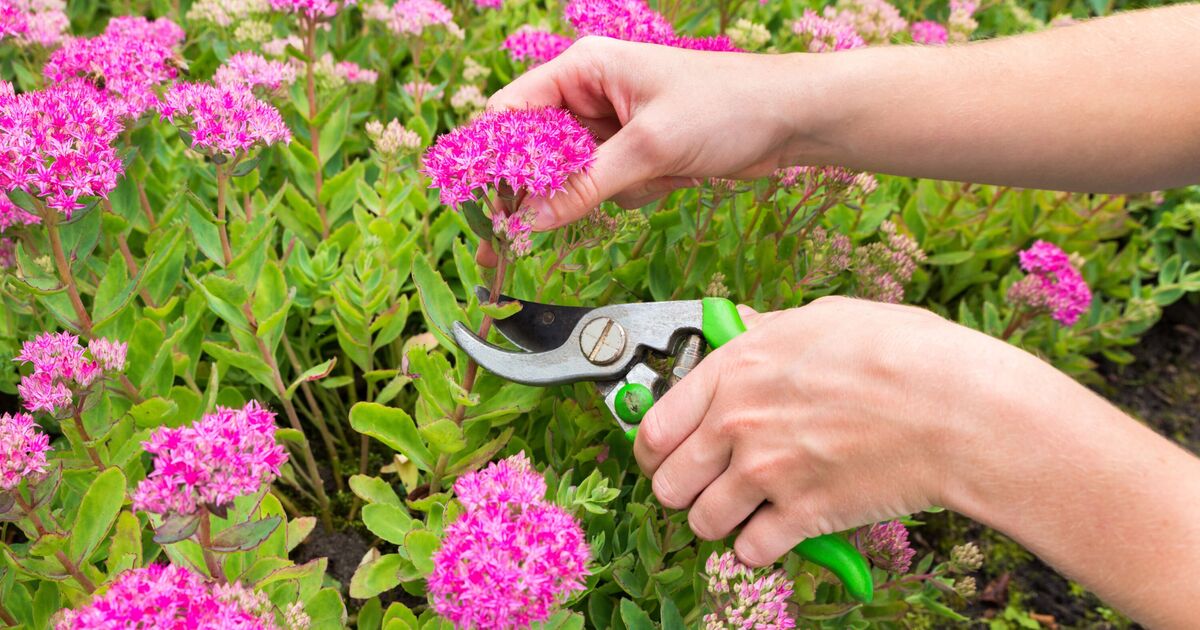Preparing for spring and your garden’s upcoming growth in the warmer months begins now – during the deep winter months.
February is a great time to start taking the essential steps to ensure healthy blooms and a thriving garden for the year ahead, especially during the seasonal changes.
Experts Cherry Lane Garden Centres advise: “By taking essential steps during the winter months, you’ll set your garden up for success come springtime.
“Whether it’s protecting your plants from frost, preparing seedbeds, or pruning dormant roses, these tasks will ensure your garden remains healthy and ready to flourish.”
One essential task that can be done now, in February, to ensure healthy blooms in greater numbers during spring is deadheading.
Simply put, deadheading prevents a plant from completing its lifecycle by halting seed production. This allows the plant to redirect its energy from seed production to making more flowers, which will help prolong its season.
Cherry Lane Garden Centre’s experts share: “While winter may seem like a dormant period, some plants still benefit from a bit of deadheading to keep them looking their best.
“Removing spent flowers from winter-flowering varieties like pansies, violas, and hellebores encourages more blooms and stops the plant from putting energy into seed production.
“Regular deadheading also prevents the flowers from turning to mush in cold, damp conditions. Simply pinch off the faded blooms with your fingers or use a pair of clean, sharp scissors for more precise removal.”
While deadheading is a common task, it’s a potentially time-consuming one. But for some green thumbers, deadheading can turn out to be quite enjoyable. While the task may appear daunting if you’re someone who has a hefty number of plants to attend to, it is an essential one that can make all the difference.
With that said, it’s worth knowing which plants benefit most from deadheading – and which ones are better left alone.
It’s worth noting that all plants do not repeat flower, so in some cases the results of deadheading are much less obvious and will largely only help in tidying up the plant’s appearance.
If you’re wondering whether deadheading is really worth the effort – the answer lies within the plant in question. Bulbous plants like daffodils deeply benefit from the exercise, as the plant’s energies are redirected towards the bulb, which in turn increases its chance of flowering the following year.
The action of deadheading is also beneficial in preventing the spread of prolific self-seeders like poppies, lady’s mantle, hellebores, and aquilegias. All that needs to be done is a simple snip of the spent flowers or seedheads before they ripen and release their contents.
Without deadheading and removing faded flowers, some plants in your garden space may have a short season or take on a dishevelled appearance. If that is the case, you can benefit from planting something entirely different.
Several other garden plants can greatly benefit from deadheading, while for some the action may be optional and not entirely necessary, and in other cases still – deadheading may actually reduce the plant’s value later in the season.
Deadheading is a great option in many cases and one of the main reasons is that the action often encourages the plant to result in a second flush of flowers. That essentially means you end up with a garden that’s colourful for much longer, with some plants blooming until the first frost sets in.
Another benefit of deadheading includes the prevention of damage and the development of mould on the spent leaves that are stuck on your plants.











